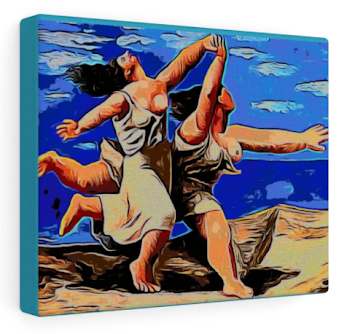




Absinthe or as it is called, The Green Fairy, has quite the reputation to live up to if one were to believe all of the accusations made against it of bygone days. The drink, a bright green alcoholic beverage is made up of herbs and ethanol. Those who made it famous during the early 19th and 20th century include many artists and writers such as Vincent van Gogh, Henri de Toulouse- Lautrec, Charles Baudelaire, and others. While there is an essence of creativity tied to the drink, there is also a history of lunacy or outrageous behavior. In this, the drink became outlawed with the belief that it had high doses of the ingredient thujone, which was making people act bizarre or insane. It hasn't been until the last few decades that advocates of absinthe and scientists alike have taken another look at the drink to see why it received such a bad rap. With modern technology, it was determined that the drink itself was not dangerous at all and the amounts of thujone were actually rather innocuous. Scientist Ted Breaus published a treatise in the Journal of Agricultural and Food Chemistry, stating that most absinthe-based liquor being produced now contains the chemical in a 5:1,000,000 ratio. That's 5 parts thujone to a million parts of absinthe. So why did it make people behave so bizarre? And why have countries spent years treating absinthe as contraband only to be purchased on the black market? Historical evidence has shown that during the early days of producing absinthe, many of the home brewed or bootlegged brews did not undergo any type of distillation or sanitary processing. This may have caused impurities to show up in the drink and contaminate it. Such impurities could have caused dangerous forms of hallucinations. This, followed by early researches done on the drink proving it bad, can also now be proved to be faulty. In truth, people just drank too much of it and the bad behavior of people was simply about being very drunk. Today, like all alcohol, absinthe is highly regulated by both international and national laws. Only absinthe liquors with thujone-free labels (or less than 10:1,000,000/10ppm thujone.) are allowed to be put up for public sale. There are also medical warnings included regarding over-consumption of liquor. Many countries that had outlawed absinthe in the past are now changing their laws around. In the 1990s, the European Union began to reauthorize absinthe's manufacture and sale. As of February 2008, nearly 200 brands of absinthe were being produced in a dozen countries, most notably in France, Switzerland, Spain, and the Czech Republic. Commercial distillation of absinthe in the United States resumed in 2007 Other countries never banned absinthe, notably Britain, where absinthe had not been as popular as in continental Europe. Absinthe was also never banned in Spain, and its production and consumption has never ceased. Australia was another country that never prohibited the manufacturing or use of absinthe, although they do have strict rules on importing any product containing oil of wormwood. In 1906, Belgium and Brazil banned the sale and distribution of absinthe, although they were not the first. Absinthe had been banned as early as 1898 in the colony of the Congo Free State. The prohibition of absinthe in France in 1915 led to increased popularity of pastis (and of ouzo, to a lesser extent), which are anise-flavored spirits that do not contain wormwood.
In Switzerland, the ban drove the purchase of absinthe underground. Clandestine (illegal) home distillers produced absinthe after the ban, focusing on la Bleue, which was easier to conceal from the authorities. In the Netherlands, restrictions on the manufacture and sale of Absinthe were successfully challenged by the Amsterdam wine seller Menno Boorsma in July 2004, making absinthe legal once again. Belgium, as part of an effort to simplify its laws, removed its absinthe law on 1 January 2005, citing (as did the Dutch judge) European food regulations as sufficient to render the law unnecessary (and indeed, in conflict with the spirit of the Single European Market). In Switzerland, the constitutional ban on absinthe was repealed in 2000 during an overhaul of the national constitution, although the prohibition was written into ordinary law instead. Later that law was repealed, so from 1 March 2005, absinthe was again legal in its country of origin. Today, matter-of-fact, most members of the European Union are now allowed to sale absinthe, as long as it is limited to 10 milligrams of thujone per kilogram (some of the absinthes of yesteryear boasted up to six times that amount). You can buy absinthe in grocery chains in the Czech Republic and in liquor stores in Denmark, Sweden, New Zealand and Japan. Bars and restaurants in Britain began serving it when they discovered it was never formally banned in the country. Yes, the legacy of absinthe as a mysterious, addictive, and mind-altering drink continues to this day - this is why it is said there is an absinthe of old and new. But even with this legacy, more and more people are starting to enjoy absinthe again, knowing it is a safe yet unique drink, finally back on the shelves for consumption.Green Devil provides information, tips and kits on the making and history of absinthe throughout the ages. Learn more about the allure this beverage has held over the centuries or make your own absinthe alcohol and find out for yourself. Visit online for more information.
by ROBERT BELL









